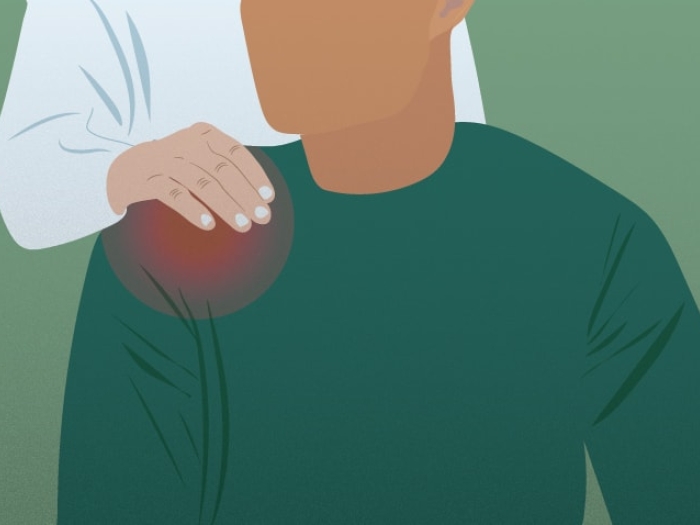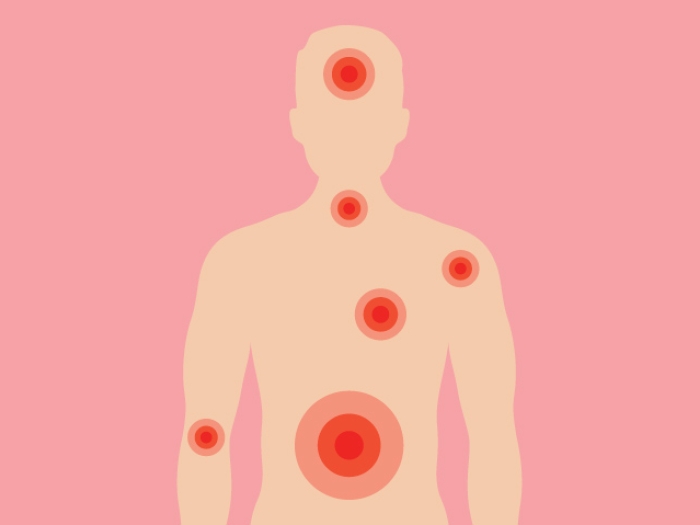Opioid addiction and chronic pain are both highly prevalent in the U.S. How alternate treatment options can be more effective and less dangerous while easing the suffering.
7:00 AM
Author |

Pain is the most common reason people seek medical care, according to the National Institutes of Health.
MORE FROM MICHIGAN: Sign up for our weekly newsletter
"The prevalence of chronic pain in the U.S. is difficult to estimate, but its impact is profound," says Daniel Berland, M.D., clinical assistant professor of medicine at Michigan Medicine. "One hundred million Americans suffer daily pain symptoms, and chronic pain is the leading cause of long-term disability in our country. These numbers will only increase as our population ages, amplifying the need for effective, accessible interventions to manage chronic pain and preserve function."
One common treatment for pain is the use of opioid medications. But these come at the cost of potential worse pain and function, plus dependence or addiction. Opioids sometimes do more harm than good.
"There are a number of patients who have opioid-induced hyperalgesia, or an increased sensitivity to pain," says Ronald Wasserman, M.D., assistant professor of anesthesiology, service chief for pain medicine and director of the University of Michigan Back and Pain Center. "With hyperalgesia, patients are on a higher dose of opioids but not responding. These patients tend to have more widespread pain, and the opioids are actually causing the increase and spreading the pain. This process and understanding of these brain mechanisms is poorly understood."
"Clearly we have an opioid epidemic in this country, so our goal for patients is to ease pain and help get them off these high-dose opioids that could actually be causing them more pain."
The evidence showing opioids to be effective in the treatment of chronic pain is lacking, Wasserman adds, yet numerous studies indicate the significant risks associated with the drugs.
Because of this, Wasserman and Berland, both part of the University of Michigan Comprehensive Musculoskeletal Center, use intervention techniques that do not include prescribing opioids.
Our goal for patients is to ease pain and help get them off these high-dose opioids that could actually be causing them more pain.Ronald Wasserman, M.D.
Treatments options
Pain can often be effectively managed through treatments such as:
-
Injections, patches or ointments (for pain specific to one area)
-
Surgery
-
Physical therapy
-
Psychological counseling, depending on the patient's specific pain concerns and history
-
Mindfulness techniques, such as meditation (not covered by insurance)
When Berland meets with new patients, he asks them how disabling their pain is, what they think brought on their pain and what has — and has not — worked in the past to manage it. By taking time to talk with patients, he explains, it's not uncommon to discover underlying psychological sources that worsen their pain and suffering.
"Pain is often a multidisciplinary problem that requires a multidisciplinary approach," he says.
"Many patients have had things happen to them in life that make their brains react excessively to the pain they have in their bodies. It's not because they're crazy or they want disability, but instead, their brain's response to pain has effectively been altered by their lives."
SEE ALSO: Opioids: When the Harms Outweigh the Benefits
Wasserman agrees. "Patients take opioids for different reasons, and we continually take part in research to better understand the reasons why opioids fail to work in the chronic pain patient."
With this team approach in mind, there's talk of establishing a multidisciplinary opioid detox clinic at Michigan Medicine dedicated to treating patients on high-dose opioids, either chronically or pre- and post-op, and weaning them down or off the drugs. If such a clinic should open, it would include physicians with expertise in the treatment of addiction and opioid dependence, as well as psychologists and social workers.
Non-opioid medications
If patients still need medication, a number of non-opioid options are available, such as:
-
Acetaminophen, such as Tylenol
-
Nonsteroidal anti-inflammatory drugs (NSAIDs), such as ibuprofen
-
Numerous so-called adjuvant medications that can improve pain, mood and sleep
With over-the-counter therapies, physicians should continue to monitor patients because excessive doses can cause liver or gastrointestinal problems.
Berland says these medications can be used alone or in combination with other pain relievers. For example, several classes of antidepressants and anticonvulsant medications have proved effective for some types of pain while also potentially benefiting mood and sleep.
Some patients, paradoxically, do better once they are weaned from existing pain medications.
Overall, it's important for patients, working with their care providers, to set realistic treatment goals for functional improvement.
"While complete pain relief may not be possible, effective therapy should control pain in order to improve a person's functioning at work and home, in social situations and while pursuing preferred activities," Berland says.

Explore a variety of health care news & stories by visiting the Health Lab home page for more articles.

Department of Communication at Michigan Medicine
Want top health & research news weekly? Sign up for Health Lab’s newsletters today!





